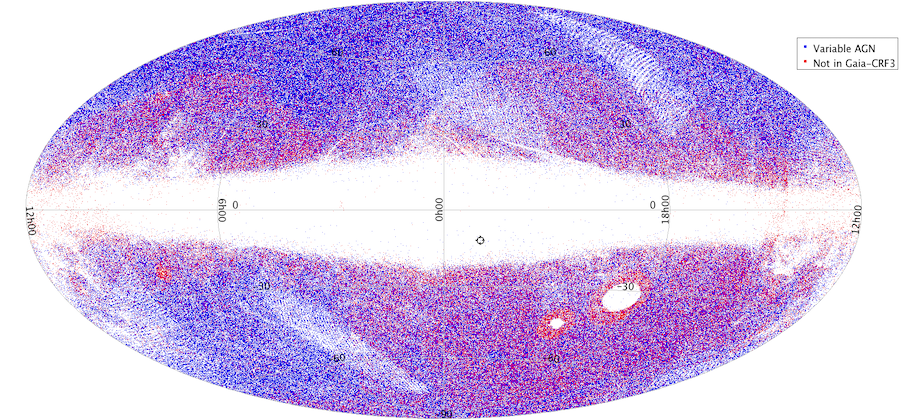10.4.4 Quality assessment and validation
Verification
A preliminary verification phase was devoted to the methods for the computation of parameters that are used in the selection procedure.
Visual inspection of light curves revealed that a few of them present a single strong outlier, up to several magnitudes brighter than the other data points. This was likely due to confusion with a nearby bright star. Therefore, the fractional variability was calculated using the median flux and the mad_mag_g_fov squared instead of the usually adopted mean flux and variance, respectively.
The calculation of the structure_function_index was optimized by taking into account the time duration and sampling of the light curves. The index given in the catalogue is the mean of four different slope values, which were obtained by considering a smoothed variogram, a SF computed with linear or logarithmic time-lag binning, and in the linear case also weighting by the number of FoV transits in each bin. The published structure_function_index_scatter is the standard deviation of the SF-index values and therefore represents a measure of the agreement among these four methods.
The implementation of the Butler and Bloom (2011) statistics required careful calibration of the corresponding quasar-like and non-quasar variability metrics in the band. More details are given in Carnerero et al. (2023).
Whenever one of the parameters among the fractional variability, the index of the structure function, and the Butler and Bloom (2011) metrics could not be estimated, the corresponding sources were discarded.
The selection procedure, where the variable AGN sample was obtained through a comparison with the Gaia-CRF3 sample, is expected to lead to a high level of purity. The visual inspection of randomly chosen light curves allowed us to verify that most objects exhibit a typical AGN behaviour, with long time-scale variations.
As a further check, we looked at the locations of the variable AGN sources in the sky. They are plotted in Figure 10.7, where the positions of the objects not belonging to the Gaia-CRF3 sample are highlighted. The Galactic Plane and the cores of the Magellanic Clouds are almost empty, mainly because of the applied filter in source density, which removed most of the stellar contaminants in crowded regions.

Validation
The about 150 000 variable AGN candidates that were not included in the Gaia-CRF3 sample were looked for in both the literature and various databases. In particular, 53 000 of them were found to have a mid-infrared counterpart in the AllWISE catalogue (Cutri et al. 2013), within a 3search radius and with data in the , , and bands with signal-to-noise ratio . In the versus diagram, which is often used as a diagnostic tool to identify different types of objects, these variable AGN sources lie in the region where AGNs are expected.
Further details and validation tests are discussed in Carnerero et al. (2023).